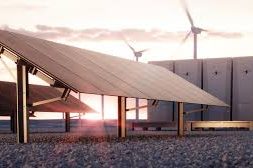
In Short : India’s wind and solar power generation has increased as payment delays have decreased, according to a recent report. Improved payment timelines from power distribution companies (DISCOMs) have bolstered confidence among renewable energy producers, leading to a surge in wind and solar power output. This positive trend supports the growth of India’s renewable energy sector and its commitment to expanding clean energy infrastructure.
In Detail : Wind and solar power generation in India increased in FY24 as payment delays from distribution companies, or discoms, were reduced, according to a report by Fitch Ratings. This development brings the country closer to achieving its renewable energy targets.
In FY24, clean power producers received payments from discoms more promptly than in the previous year, leading to improved cash flow, Fitch noted in its report on Friday. The ratings agency highlighted that receivable days for revenue from power sales in its rated portfolio improved to around 100 days in FY24, down from about 140 days in FY23. Specifically, receivable days for solar energy decreased to 88 in FY24 from 117 in the prior fiscal year, while for wind power, the metric shortened to 112 days from 165.
The increase in wind and solar power generation has moved India closer to its ambitious target of generating 500 GW of renewable energy by 2030. Although overall power generation was slightly below one-year P90 forecasts—a measure that predicts outcomes with 90 per cent accuracy—Fitch still views the growth as a positive step.
The rise in renewable energy generation in FY24 aligns with the global demand for cleaner energy sources. However, India’s renewable energy sector continues to face challenges, including slow adoption, high import costs, and expensive capital for energy generation.
Fitch reported that total solar and wind power generation in India increased by 4 per cent in FY24 compared to the previous fiscal year, driven by new assets becoming operational. Solar energy generation rose by 2 per cent as expected, while wind energy generation grew by 8 per cent, a significant improvement from the 5 per cent decline seen in FY23.
Despite this growth, wind energy generation slightly underperformed Fitch’s expectations. The agency noted that issuers attributed this to lower-than-expected resource availability.
The improvement in cash flow for renewable energy producers was also supported by the government’s late payment surcharge, which encouraged timely payments from discoms. Total collections improved for both wind and solar assets as overdue payments from most state distribution companies were cleared, with sovereign-owned entities and commercial and industrial customers largely paying on time over the last few years.
The report covered 110 renewable energy assets in India, including 77 solar plants generating just over 4 GW and 33 wind energy generators producing 2.12 GW. More than half (56 per cent) of the energy generated is contracted by government-owned discoms, with nearly a third (32 per cent) taken up by state-owned NTPC and the Solar Energy Corporation of India. The remaining energy is contracted to commercial, industrial, and other customers, according to Fitch.










